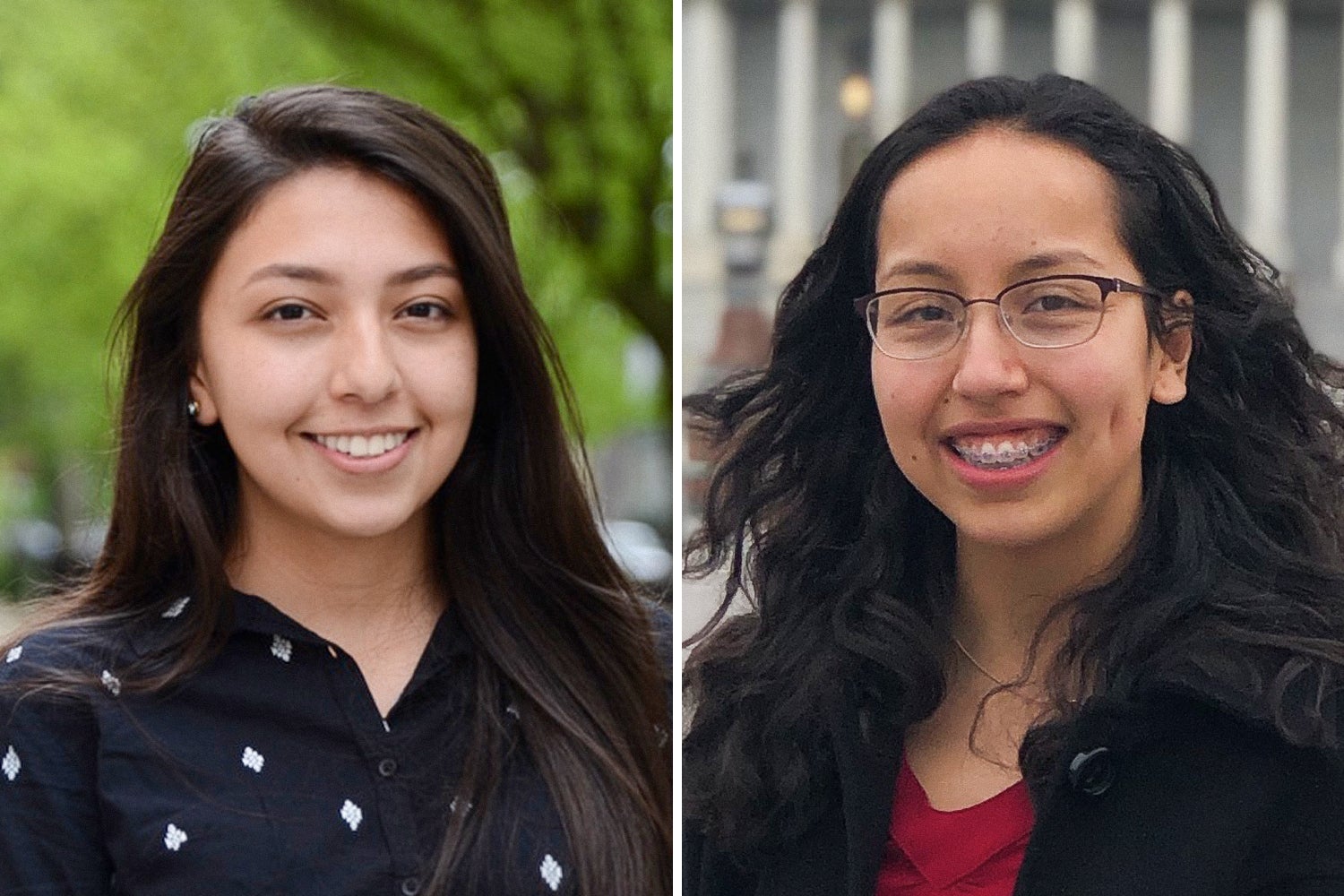When the COVID-19 pandemic began last year, Stanford undergraduate students and Human Biology majors Nadia Segura, ’22, and Gaby Escobar, ’23, quickly noticed the disproportionate impact the pandemic was having on underserved residents in the community.

Nadia Segura, ’22, and Gaby Escobar, ’23, are organizing a back to school drive to support local K-12 students and their families. (Image credit: Courtesy Nadia Segura and Gaby Escobar)
Motivated by a shared interest in social justice, equity and public health issues, they became active team members within the Stanford Medicine Department of Pediatrics, Division of General Pediatrics. Over the past 17 months, they have worked on a variety of projects addressing inequities and health disparities exacerbated by the pandemic.
Now, as many local K-12 students prepare for a return to in-person learning for the first time since the pandemic began, Segura and Escobar are organizing a Back to School Drive in collaboration with community organizations to distribute backpacks and school supplies directly to local families. Stanford Today talked with them about the effort, how the Stanford community can help, and what caused them to become so involved in the local community.
What motivated you to develop this project?
Escobar: We both began working with pediatricians and health professionals in the Division of General Pediatrics with the hope of pursuing an experience that would enable us to grow as students and as advocates. In particular, we were drawn toward the community’s longstanding commitment to achieving equity and providing support to underserved populations.
During the pandemic, the team from the Division of General Pediatrics collaborated with community partners to bring together nonprofit organizations, social service agencies and health centers to collectively support local communities in a time of unprecedented challenge. The result was nothing short of extraordinary. It was the first time we had been involved in work that not only recognized social inequality as a driver of health disparities, but also leveraged this understanding to foster receptive networks of aid. Whether it was providing on-the-ground support for education, food, legal services and financial relief to address mounting economic insecurity or advocating with the government to defend the safety net amid a flurry of legislative changes happening across the nation, this coalition has worked relentlessly at the frontlines to prioritize community wellness and meet emerging need.
How is this effort influenced or informed by your Human Biology studies?
Segura: Historically, human health has been taught, discussed or argued as an intrinsic outcome of one’s individual behavior or decision-making. As students, it has been an ongoing journey reconciling these antiquated notions with the lived experiences of both the communities that we are a part of as well as the histories that precede us. Studying human biology through a lens that considers fields such as critical race theory, ethnic studies and justice has enabled us to build frameworks that not only seek to understand the ways social inequality produces health disparities but empower us to work to develop strategies in advocacy and community health to actively dismantle them. The devastating outcomes of the pandemic have posed an unprecedented challenge physically, economically and socially for so many local families and highlights the need to re-envision what it means to care for the health of our society. Serving the community by sponsoring material donations is a small but tremendous opportunity for the Stanford community to contribute to this new and collective effort toward health, healing and well-being.
Are you focusing on serving specific local communities or the entire region?
Segura: The back to school drive aims to help children and families by collaborating with established community organizations and clinics that demonstrate specific needs. We hope the campaign shows that we at Stanford care about the surrounding communities by supporting these local organizations. Since the start of the pandemic, these groups have worked tirelessly to ensure families have access to comprehensive mental health services, adequate basic need supplies and resilient community support.
Over the next month, as thousands of Mid-Peninsula students return to a “new normal,” many families in our neighboring communities continue to disproportionately endure significant income loss. As clinic and community partners continue to work to ease some of the uncertainty of this new stage, we hope to support children and youth with the materials they need to pave their own path toward success.
What has the reaction been like so far from the community, and what are your goals for the drive?
Escobar: In just two weeks, we have already gotten wonderful support from the Stanford community and we want to do even more. Giving back with donations of school supplies, snacks and other needs can have a significant impact. The families who receive assistance are low-income, mixed status and/or disproportionately affected by changes in their neighborhoods. Our goal is to distribute at least 10 backpacks and other school supplies to each of our seven community partners based on the needs they have identified. In meeting this challenge, we believe there is opportunity to build stronger and more resilient relationships between Stanford and the community. Together, we can do our part by fostering a commitment to long-term community engagement. The back to school drive is just one small part of that journey, one that we believe can foster an immense impact, especially at such a critical moment for families in need.
How can the Stanford community participate in the back to school drive?
Segura: Please visit the Back to School Drive website. You can learn more about the drive and the community organizations we’re working with, choose an organization to support, view their wish list and make a donation. Every bit of support is important to helping our local students.